Outcomes for mucous membrane pemphigoid depend on early diagnosis, aggressive therapy
Careful examination and follow-up along with appropriate immunosuppressive therapy are key in preserving vision.
 Mark R. Levine |
Early diagnosis and aggressive local and systemic therapy are critical to long-term visual outcome in cases of mucous membrane pemphigoid with ocular involvement.
Mucous membrane pemphigoid (MMP), a chronic systemic autoimmune blistering disease that affects any mucous membrane, is characterized by linear deposition of IgG, IgM, IgA or C3 along the epithelial basement membrane that leads in most mucosal tissue to progressive scar formation (Figure 1). Median age for MMP with ocular involvement is 67.4 years (range: 50 years to 80 years), with women being more commonly affected than men. In a large retrospective study, Thorne and colleagues found that approximately 80% of patients with MMP have ocular involvement.
Patients with ocular manifestations of MMP often present with a nonspecific chronic conjunctivitis, with symptoms consisting of irritation, burning and tearing. This eventually leads to a progressive subepithelial fibrosis of the conjunctiva with subtle blunting of the fornix to frank symblepharon formation, shrinkage and obliteration of the conjunctival fornices (Figure 2). The conjunctival scarring results in early trichiasis progressing to cicatricial entropion with trichiasis. The conjunctival scarring also leads to obliteration of the lacrimal ductules and accessory glands of Wolfring and Krause, as well as loss of goblet cells, causing dry eye symptoms secondary to aqueous tear deficiency and evaporative tear dysfunction. The alterations in the ocular surface, eyelid and eyelash position and destruction of limbal stem cells lead to a progressive keratopathy with neovascularization and conjunctivalization of the cornea. Ultimately, xerosis, ocular surface keratinization and ankyloblepharon develop. In addition, in a study of bacterial flora in these patients, 81% had potential pathogens, most commonly staphylococci.
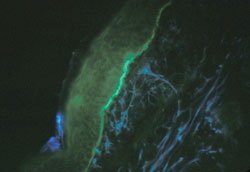 Figure 1. Basement membrane immunofluorescence of skin. |
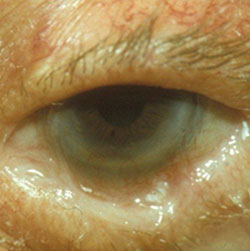 Figure 2. A cicatricial entropion with conjunctival blunting, symblepharon and trichiasis. Images: Levine MR |
Histopathologically, blisters or bullae in subepithelial location characterize MMP. Early in disease, infiltration of T lymphocytes, plasma cells, polymorphonuclear leukocytes and occasional eosinophils are present. In the acute phase, there are numerous polymorphonuclear leukocytes, and in the later phases, subepithelial fibrosis ensues. Immunologically, perilesional mucosa reveals one or a combination of IgG, IgM, IgA or C3 to the epithelial basement membrane in a linear configuration of mucous membranes, conjunctiva and skin. The biopsy specimen should include tissue adjacent to the blister because tissue-fixed immunoglobulins within the blister may have been destroyed by inflammatory infiltrate. For multi-membrane involvement, the biopsy specimen should be obtained from nonocular tissue adjacent to the blister (eg, mouth tissue). When only the conjunctiva is involved, great care must be taken to minimize trauma to the conjunctiva, which could exacerbate the disease process. The biopsy specimen should be placed in Michel’s fixative for later processing if necessary; results for direct immunofluorescence are reliable for up to 6 months and for electron microscopy for up to 28 days. Conjunctival biopsy results are positive for MMP in 50% to 80% of cases. Sensitivity of detection is increased using immunoperoxidase technique when immunofluorescence has yielded a negative result. A negative biopsy result does not necessarily exclude the diagnosis, but alternative causes for progressive cicatricialization should be considered.
Differential diagnosis
The differential diagnosis of MMP includes Stevens-Johnson syndrome, erythema multiforme, paraneoplastic pemphigus and pseudopemphigoid. According to an epidemiologic study by Thorne and colleagues, the most common presumed causes of pseudopemphigoid include glaucoma medications, rosacea blepharoconjunctivitis, atopic keratoconjunctivitis and conjunctival lichen planus.
Medications implicated as causes of pseudopemphigoid classically include echothiophate iodide, as well as pilocarpine, dimecarium bromide, timolol, idoxuridine, alpha-agonists and epinephrine. In my experience with drug-induced pseudopemphigoid, IgG, IgM and IgA or complement is rarely seen on immunofluorescence of biopsy specimens.
Medical treatment
Medical treatment of MMP involving the ocular surface should be very aggressive to prevent severe keratoconjunctival sicca and advanced cicatricializing disease leading to ankyloblepharon. Because MMP is a systemic disease, topical therapy alone is insufficient. Evaluation of the clinical picture — combined with the severity of inflammation, location and rapidity of progression — should direct selection of anti-inflammatory medical treatment. Because ocular conjunctival disease is blinding, ocular disease is always considered high risk.
For patients with severe, rapidly progressive disease, the treatment should consist of prednisone (1 mg to 1.5 mg per kg body weight per day) and cyclophosphamide or azathioprine. For less progressive disease, dapsone (50 mg to 200 mg per day) can be considered as an alternative initial therapy. The most common side effects of cyclophosphamide include myelosuppression and hemorrhagic cystitis, whereas azathioprine most commonly causes gastrointestinal discomfort, although reversible hepatic toxicity can occur in 2% of patients. Patients need to be carefully monitored by their internist for these complications. Dapsone treatment should be avoided in sulfa-allergic patients or those with glucose-6-phosphate dehydrogenase deficiency. Other promising treatments include mycophenolate mofetil combined with dapsone and steroid, intravenous immunoglobulin, and biologics such as rituximab and daclizumab. Patients usually show decreased conjunctival hyperemia within weeks of starting treatment. Immunosuppressive treatment is usually continued 2 to 3 years into remission.
Managing disease
In terms of management of local disease, preservative-free artificial tears in conjunction with punctal plugs or cautery help alleviate the aqueous tear deficiency. If corneal epithelial breakdown develops, a therapeutic scleral lens may be applied. However, patients must be carefully monitored for contact lens-associated infection. Secondary bacterial infection should be treated based on culture and sensitivity.
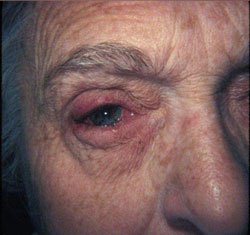 Figure 3. A cicatricial entropion due to conjunctival shortening of right lower lid. |
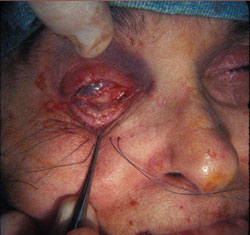 Figure 4. Mucous membrane graft in place with a plastic band stent to keep graft flat. |
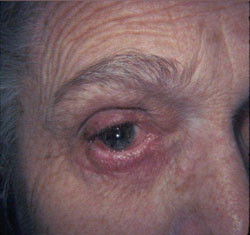 Figure 5. Postop result following mucous membrane grafting. |
In the surgical management of patients with MMP, treatment should be postponed at least 6 weeks if possible or until the disease is quiescent or markedly improved on systemic therapy. In cases of trichiasis, lash ablation with cryotherapy, argon laser and excision of the lash follicle complex are effective, with or without mucous membrane grafting. Mild cicatricial entropion may be simply treated by dividing the symblepharon with placement of a symblepharon ring until re-epithelialization occurs with very good results. Reformation of the cul-de-sac occurs in 5 to 7 days. More advanced cicatricial disease of the upper lid and cul-de-sac may be treated with a transverse blepharotomy and marginal rotation with lysis of the symblepharon and symblepharon ring. Mucous membrane graft may be needed to reform the superior cul-de-sac in more severe cases or surgical failure. In inferior cul-de-sac reconstruction, a mucous membrane graft combined with a transverse blepharoplasty and marginal rotation or retractor advancement will effectively rotate the eyelid margin (Figures 3, 4 and 5). The rate of failure of mucous membrane grafting may be high, especially without pre-treatment of keratoconjunctivitis sicca and control of inflammation with immunosuppression.
Prognosis
We agree with other authors that severe keratoconjunctivitis sicca and advanced ocular cicatricial disease and especially active inflammation have a poor prognosis. There are times, however, when the surgeon has no choice in cases of significant cicatricial entropion. Without eyelid contour restoration, the cornea is destined for punctate keratopathy, pannus, ulceration and perforation. Operating in the face of severe inflammation without systemic immunosuppressive treatment is not advised, however. Pre-treatment and postoperative immunosuppression cannot be emphasized enough. Finally, end-stage xerotic keratinized cornea with severe ankyloblepharon may be treated with through-the-lid keratoprosthesis, although long-term results suggest exercising caution.
Ultimately, diagnosing patients early with careful examination and follow-up and conferring with the patient’s internist to initiate appropriate immunosuppressive therapy are key to visual preservation.
References:
- Bernauer W, Wright P, Dart JK, Leonard JN, Lightman S. The conjunctiva in acute and chronic mucous membrane pemphigoid. An immunohistochemical analysis. Ophthalmology. 1993;100(3):339-346.
- Chan LS, Ahmed AR, Anhalt GJ, et al. The first international consensus on mucous membrane pemphigoid: definition, diagnostic criteria, pathogenic factors, medical treatment, and prognostic indicators. Arch Dermatol. 2002;138(3):370-379.
- Chan LS, Vanderlugt CJ, Hashimoto T, et al. Epitope spreading: lessons from autoimmune skin diseases. J Invest Dermatol. 1998;110(2):103-109.
- Ciralsky J, Papaliodis GN, Foster CS, Dohlman CH, Chodosh J. Keratoprosthesis in autoimmune disease. Ocul Immunol Inflamm. 2010;18(4):275-280.
- Demers PE, Robin H, Prost C, Toutblanc M, Hoang-Xuan T. Immunohistopathologic testing in patients suspected of ocular cicatricial pemphigoid. Curr Eye Res. 1998;17(8):823-827.
- Elder MJ, Lightman S. The immunological features and pathophysiology of ocular cicatricial pemphigoid. Eye (Lond). 1994;8(Pt 2):196-199.
- Foster CS, Chang PY, Ahmed AR. Combination of rituximab and intravenous immunoglobulin for recalcitrant ocular cicatricial pemphigoid: a preliminary report. Ophthalmology. 2010;117(5):861-869.
- Fraunfelder FT, Meyer SM. Ocular toxicology update. Aust J Ophthalmol. 1984;12(4):391-394.
- Heiligenhaus A, Shore JW, Rubin PA, Foster CS. Long-term results of mucous membrane grafting in ocular cicatricial pemphigoid. Implications for patient selection and surgical considerations. Ophthalmology. 1993;100(9):1283-1288.
- Hollick EJ, Watson SL, Dart JK, Luthert PJ, Allan BD. Legeais BioKpro III keratoprosthesis implantation: long term results in seven patients. Br J Ophthalmol. 2006;90(9):1146-1151.
- Letko E, Miserocchi E, Daoud YJ, Christen W, Foster CS, Ahmed AR. A nonrandomized comparison of the clinical outcome of ocular involvement in patients with mucous membrane (cicatricial) pemphigoid between conventional immunosuppressive and intravenous immunoglobulin therapies. Clin Immunol. 2004;111(3):303-310.
- Michel B, Waisman M, Thomas CI, Levine M. Immunofluorescent test in bullous diseases of skin and mucous membranes. Ann Ophthalmol. 1974;6(12):1311-1316.
- Mondino BJ, Brown SI. Ocular cicatricial pemphigoid. Ophthalmology. 1981;88(2):95-100.
- Moorthy RS, ed. Section 9: Intraocular inflammation and uveitis. In: Basic and Clinical Science Course. 2007-2008, vol. 9. San Francisco, CA: American Academy of Ophthalmology; 2007.
- Papaliodis GN, Chu D, Foster CS. Treatment of ocular inflammatory disorders with daclizumab. Ophthalmology. 2003;110(4):786-789.
- Pfister RR, Burstein N. The effects of ophthalmic drugs, vehicles, and preservatives on corneal epithelium: a scanning electron microscope study. Invest Ophthalmol. 1976;15(4):246-259.
- Power WJ, Neves RA, Rodriguez A, Dutt JE, Foster CS. Increasing the diagnostic yield of conjunctival biopsy in patients with suspected ocular cicatricial pemphigoid. Ophthalmology. 1995;102(8):1158-1163.
- Rosenthal P, Cotter J. The Boston Scleral Lens in the management of severe ocular surface disease. Ophthalmol Clin North Am. 2003;16(1):89-93.
- Sutphin Jr. JE, Chodosh H, Dana MR, et al. Section 8: External disease and cornea. In: Basic and Clinical Science Course. 2010-2011 ed. San Francisco, CA: American Academy of Ophthalmology; 2010.
- Thorne JE, Anhalt GJ, Jabs DA. Mucous membrane pemphigoid and pseudopemphigoid. Ophthalmology. 2004;111(1):45-52.
- Vaughn Jones SA, Palmer I, Bhogal BS, Eady RA, Black MM. The use of Michel’s transport medium for immunofluorescence and immunoelectron microscopy in autoimmune bullous diseases. J Cutan Pathol. 1995;22(4):365-370.
- Virginia Miraldi Utz, MD, is chief resident, Case Affiliated Residency Program in Ophthalmology, Case Western Reserve University.
- Mark R. Levine, MD, OSN Oculoplastic and Reconstructive Surgery Section Editor, is a clinical professor of ophthalmology at University Hospitals Eye Institute, Case Western Reserve University School of Medicine. He can be reached at University Suburban Health Center, 1611 South Green Road, Suite 306A, South Euclid, OH 44121; 216-291-9770; fax: 216-291-0550; email: mlevine@eye-lids.com.
- Disclosure: No products or companies are mentioned that would require financial disclosure.

